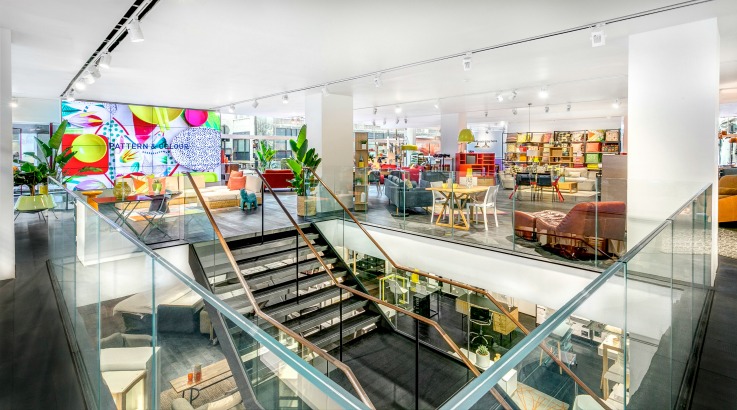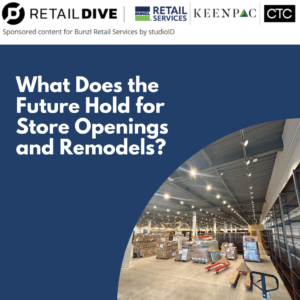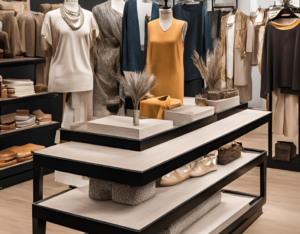
Are Flagship Stores Making a Comeback?
Flagships offer the ultimate brand-to-customer connection, but do they have a place in today’s retail environment?
From the Galeries Lafayette in Paris to Fifth Avenue, the images of classic flagships such as Gimbels take many of us back to earlier days. These nostalgic stores were wildly successful in their heyday, but the concept of a retail flagship has shifted in recent years.
What is a Flagship Store?
A flagship store is often a retailer’s largest, most recognizable store. It acts as the most decadent and spectacular example of a retail brand’s identity.
Usually located in big cities such as London, New York City, Paris Beijing, Tokyo, retail flagships are more than just a supersized store, they become a designation outright.
With impressive creativity, many visitors are drawn to flagships for the experience, rather than for the straightforward goal of purchase. However, flagships can have a positive impact on sales as they increase brand and product awareness. An impressive experience at a flagship store can increase customer goodwill and trigger a purchase down the road.
While flagships such as Lord & Taylor, Calvin Klein and Gap have closed in recent years, several new flagships have opened including Balenciaga, Telfar, Uniqlo and A Pea in the Pod. Even previously digital-only brands such as Everlane and Bonobos have recently launched retail flagships.
Why Are Flagship Stores Coming Back?
After the pandemic, consumers are shopping with a vengeance. After being kept away from physical shops for months at a time in some cases, shoppers are now yearning for that in-store experience.
Many shoppers love the experience of browsing through a store and the thrill of an unexpected discovery or finding a great deal.
For some shoppers, the online experience isn’t enough to secure a sale, with 61% of consumers preferring to see and try on products before they decide to make a purchase, according to PwC’s annual consumer survey.
In this post-pandemic shopping environment, shoppers are craving more face-to-face interaction with people, rather than chatbots and online experiences. Flagships offer the ultimate brand connection for shoppers.
“Consumers are seeking retail ‘experiences’ over simple purchase transactions, which is inspiring landlords and retailers to collaborate on making the destination more enjoyable, convenient, and memorable,” said Byron Carlock, PwC’s U.S. real estate practice leader.
Unmatched Customer Experience In-Store
What sets brick-and-mortar apart is the personal experience. The ability to touch and feel products, interact and gain advice from experienced sales teams can’t be underestimated. A flagship is a brand’s opportunity to set the tone, reimagine itself and create the best version of who it wants to be.
Every visit to a brick-and-mortar store offers a renewed chance to win customer loyalty. Every time a customer steps inside a store is a fresh start for a great experience. An amazing shopping experience can win back jaded customers and generate new excitement for a brand.
This does pose a challenge as retailers face the Great Resignation and short-staffing across the board. It’s essential that employees of a flagship store are well-trained in the art of customer service and act as exemplary brand representatives.
A Hands-On Brand Experience
The goal of a flagship store goes beyond commercial sales. These retail locations become known as the brand’s “home.” Flagship stores act as a physical expression of a brand. Every detail is designed to exude the brand look, products, mission and legacy.
Feeling a connection to a brand is important for shoppers, and a result, sales.
When customers feel connected to brands, 57% will increase their spending with that brand and 76% will buy from them over a competitor, according to Sprout Social. And retail flagship stores offer a tactile experience with a retail brand unlike any other.
What Modern Flagship Stores Look Like Today
Today’s flagship stores often take a much more innovative approach. From augmented reality to interactive displays, flagship stores have become an opportunity to surprise and impress customers in a whole new way—and in a way that is only fully appreciated with an in-person visit.
Nike
Nike’s House of Innovation remains a successful and thriving best-in-class example of how a flagship store can operate. Spanning six stories, each floor offers groundbreaking personal and responsive shopper experiences. Nike’s flagship store also synchronizes digital and in-store experiences.
Nike introduced their Speed Shop, an entire floor that uses local data to stock its shelves based on local community demand. With NikePlus, members can reserve items via phone and have them held in an in-store locker, ready for pickup whenever is convenient.
Topshop
Located in Oxford Circus, Topshop’s flagship store is another great example of the full brand shopping experience. Visitors can spend the entire day at the Topshop flagship, which features a café, nail bar, hairdressers, barbers, personal shoppers, a lounge, and other pop-up services. Their store reveals how much they know about their shoppers and provides opportunities to connect and serve them in multiple ways.
Lululemon
Lululemon’s New York flagship is specifically designed to bring in customers, and keep them there, by offering more than just clothing. Featuring The Concierge, a trendy hangout space showcasing a community board with the latest places to go and eat, as well as the ability to find and book local workout classes. In keeping with Lululemon’s community ethos, the top floor is home to Hub Seventeen, a space where nothing is for sale, but hosts classes, events, dinners and more.
Merging Digital with Brick-and-Mortar
In this digital world, creating a cohesive environment from online to in-store is key for successful retailers. As such, many of today’s most successful flagship stores work in tandem with their digital sites or eCommerce stores.
“The in-store option isn’t dead—it just starts online. Having e-commerce available simply builds a bridge to allow consumers to support your local, thoughtful store presence,” Berenice Giannini, co-founder of eTailPet.
One example is Burberry’s London-based Regent store, which is set up to reflect their website to create a consistent experience. This Burberry store is enhanced with technology such as interactive mirrors and focuses on livestreaming events to seamlessly blend digital and store experiences.
Another example is Bonobos menswear, whose flagship store operates as a showroom where customers can look, feel and try on collections before purchasing online. Instead of housing inventory for purchase in-store, the emphasis in Bonobos “Guideshops” is solely on the customer service experience.
A Visual and Creative Retail Wonderland
Flagship stores are an opportunity to push the limits of what’s possible. Retailers can create more unique, unconventional spaces than a standard functioning brick-and-mortar location.
Bringing the brand aesthetic to life is a major focus, with visual design, merchandising and creativity becoming paramount. It’s a brand’s chance to say who they are and say it loud.
If a retailer doesn’t have brand guidelines set, or is rebranding, a flagship store can help establish the look and merchandising standards for other stores.
These ultra-creative spaces also provide engaging social media content and encourage visitors to post and share online as well.
What does it take for a flagship to be successful?
Our key takeaways are that flagship stores aren’t going away, just evolving. Retailers need to constantly adapt to stay relevant and provide the best customer service possible.
In order for a retail flagship to be successful, they should aim to:
- Provide an authentic brand experience focusing on what they do best
- Deliver exceptional customer service
- Integrate digital capabilities
- Offer customer engagement and interaction
- Extend services beyond the typical shopping environment
- Standout creatively and visually




